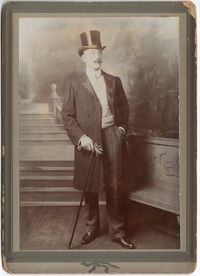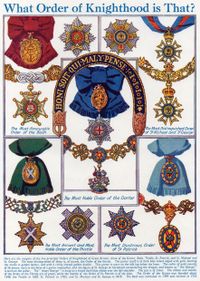Archive 2022
21 April 1926 - 8 September 2022
With Queen Elizabeth, we commemorate a great and unique personality who ascended the throne as a young woman and ruled Britain for over 70 years with dedication and duty to her country and other realms.
The Queen has always been there and has accompanied our lives. She was both an inspiration and example to us all, in Britain and around the world. There are still several Royal Houses in the world, but there was only one Queen and this was Elizabeth II. That is how she will be remembered forever.
On 8 September 2022, Queen Elizabeth passed away at the age of 96, leaving a void. She will be greatly missed.
An excellent and exceptional menu was served, accompanied by great wines. This was a very special taste experience. Following a few impressions.
Congratulations, Ma'am!
Regina and I offer our heartfelt congratulations to Her Majesty The Queen on her 70th anniversary of accession to the throne and pay tribute for her lifetime dedication to the service and duty to the nation.
'God save the Queen'
2 to 5 JUNE 2022
Queen's Platinum Jubilee Celebrations
In Honour to Her Majesty The Queen - A Great Party, for Queen & Country
The Queen’s Platinum Jubilee Central Weekend
... with the right weather for the 4-day celebrations.
Platinum Jubilee weather prediction: the "warmest weekend" of the year.
Good news for the Queen as the weather for the Platinum Jubilee has been forecast to be sunny across the UK, with experts predicting the "warmest weekend" of the year. Meteorologists claim that the Jubilee weekend could see temperatures of up to 28°C. While there are still a few days to go until the event, forecasts suggest that the weather for the Platinum Jubilee will be sunny and dry as people across the UK prepare for the celebrations. This could be the warmest weekend so far and would be appropriate for the 4-day Jubilee celebrations. Let's hope the weather really does indeed do Queen Elizabeth proud!
Thursday 2nd June
The Queen’s Birthday Parade "Trooping the Colour": Over 1,400 parading soldiers, 200 horses and 400 musicians will come together in the traditional Parade to mark The Queen's official birthday, usually held on the second Saturday in June.
Platinum Jubilee Beacons: The United Kingdom’s long tradition of celebrating Royal Jubilees, Weddings and Coronations with the lighting of beacons will be continued to mark the Platinum Jubilee. Over 1,500 beacons will be lit throughout the United Kingdom, Channel Islands, Isle of Man and UK Overseas Territories. For the first time, beacons will also be lit in each of the capital cities of the Commonwealth countries to celebrate The Queen’s Platinum Jubilee. The Principal beacon will be lit in a special ceremony at Buckingham Palace.
Friday 3rd June
Service of Thanksgiving: A Service of Thanksgiving for The Queen’s reign will be held at St Paul’s Cathedral.
Saturday 4th June
The Derby at Epsom Downs: Her Majesty The Queen, accompanied by Members of the Royal Family, will attend the Derby at Epsom Downs.
Platinum Party at the Palace: The BBC will stage and broadcast a special live concert from Buckingham Palace that will bring together some of the world’s biggest entertainment stars to celebrate the most significant and joyous moments from The Queen’s seven decade reign.
Sunday 5th June
The Big Jubilee Lunch: The Big Lunch has encouraged communities to celebrate their connections and get to know each other a little bit better, coming together in a spirit of fun and friendship. In 2022 The Big Lunch will bring the Jubilee celebrations into the heart of every community. People are invited to share friendship, food and fun with neighbours as part of the Platinum Jubilee celebrations.
The Platinum Jubilee Pageant: Artistic performers, dancers, musicians, military personnel, key workers and volunteers will unite to tell the story of The Queen’s 70 year reign in an awe-inspiring festival of creativity. The London based Pageant will combine pomp and ceremony, street arts, theatre, music, circus, costumes as well as cutting-edge visual technology, drawing on talent from every part of the United Kingdom and across the Commonwealth.
13 MAY 2022
Preparations for the Queen's Platinum Jubilee are on the way
It won't be long before the Queen's Platinum Jubilee celebrations take place. Some preparations are also done in our household. A lot of Champagne has already been delivered for the Royal celebrations and a great party. Appropriate to celebrate the Queen's 70th Anniversary of accession to the throne.
Some excellent Champagnes are served for this historical occasion: Charles Lafitte Cuvée Spéciale 1834, which was already served at receptions for the coronation of Queen Elizabeth in 1953, Pommery Brut Royal and Pol Roger Réserve, Royal Warrant Holder and favourite Champagne served at Royal celebrations and preferred drink of former Prime Minister Sir Winston Churchill.
19 APRIL 2022
Green Man & Gargoyles - Mystical Creatures from the Middle Ages
If we look closely at the exterior facades of historic buildings, like churches, cathedrals, stately homes or castles, we can discover them - Green Man and Gargoyles. Green Man and Gargoyles are different, but certain architectural ornamental elements on sacred and secular buildings of the Middle Ages and early modern times. The Green Man usually depicts a male head whose main hair and beard are in the form of leaves, which also grow out of his mouth. The images often resemble those of Wild Men.
Gargoyles are originally mostly pipes or gutters for water drainage at the eaves gutters of the roofs. In their simple form, they are also called drainage gutters, drainage eaves or attachment eaves. Through water spouts, the collected rainwater from the eaves shoots away from the building in an arc and is thus prevented from penetrating into the masonry and the foundation. They are often figurative and represent - usually fantastic - animal forms. The French name for gargoyles is gargouille, adopted into English as gargoyle, related to the German "gurgeln".
The myth of the Green Man dates back to pre-Christian times; it has survived in German, English and French cathedrals of the Gothic and High Gothic periods, where the Green Man was depicted as a leafy face in hundreds of sculptures in corners, lintels and plinths.
Lady Raglan coined the term in 1939 with her essay The "Green Man" in Church Architecture. A figure appears on the right-hand pillar of the portal of St Mary and St David's Church in Kilpeck. A woodcut depiction is in the Church of the Holy Ghost at Crowcombe in Somerset. The Green man of Sampford Courtenay in Devon is incised in the intersection of a cross on a wooden panel in St Andrew church.
As early as the Romanesque period and later in the Gothic and Renaissance periods, demonic figures or animals were often used in a symbolic sense, especially on larger church buildings. As gargoyles, they are found exclusively on the exterior façade of churches and never inside, symbolising the influence of the devil on the earthly world, which contrasts with the purity of the kingdom of heaven - symbolised by the interior of the church. These water-breathing creatures are called gargoyles and have the reputation of being protectors. Their demonic appearance is said to hold up a mirror to spirits and demons, scaring them away and thus protecting churches and monasteries, and sometimes castles and dwellings, from evil forces - they consequently have an apotropaic significance. Gargoyles are often depicted with animal-like bodies and faces, more rarely with human-like bodies and demonic features. They often have wings, with which, according to mythology, they cannot fly, but only glide. Apart from the symbolic content of the depictions, however, humorous depictions were also executed, so-called drolleries.
But even today, Green Man and Gargoyles are popular as decorations mounted on house walls, carved from tree trunks, crouching hidden in the garden, resting on a wall, as gate keepers or in its original form as a gargoyle on a fountain. Such sculptures are still hand-finished in the traditional cast-stone process in South England.
20 MARCH 2022
Time for Tea - History of the Tea Caddy
The term "caddy" is derived from the Chinese word "catty", a Chinese pound, which is equivalent to a unit of weight of 600 grams. This is also the unit of measurement in which tea used to be sold. The English adopted the word and began to use the term "caddy" for a container for tea.
They made a unique tea caddy from wood, silver, tortoiseshell, pewter, brass or copper. The most popular materials were woods such as mahogany and rosewood. Most were box-shaped and decorated with intricate motifs. They were worked with fine inlays and had knobs made of ivory, ebony or silver.
Tea caddies were all the rage and Chippendale and Hepple White were two of the most famous designers and manufacturers of the time.
The household tea caddy became a status symbol. It was a valued item in many upper class homes. Tea caddies were expensive and decorative and therefore blended in well with the rest of the room's furnishings.
They were very valuable to their owners, which is why many tea caddies were fitted with locks to keep them safe. The lady or mistress of the house possessed the key to the tea caddy so that she could keep the contents safe.
The tea caddy is still the best way to store tea and an essential utensil for all tea drinkers, whether they prefer their tea loose or in a tea bag. The tea caddy is airtight, so the tea is protected and its delicious taste and fragrant aroma are preserved.
Tea caddies are a must for all tea lovers. The wooden boxes that were so popular in the 18th and 19th centuries have been replaced by modern tea caddies, which come in a variety of different designs, shapes and sizes made from different materials.
Spode Blue Italian china tea caddy with Spode Blue Room tea mugs
6 FEBRUARY 2022
Queen Elizabeth II - 70 years on the Throne
Queen Elizabeth II is set to become the first British monarch in history to reach a Platinum Jubilee after 70 years on the throne. She is the longest reigning monarch in history. Princess Elizabeth was 25 when she ascended the British throne on 6 February 1952. That is the official date on which the Queen took the throne.
Queen Elizabeth succeeded her father, King George VI, so the official date of the beginning of her reign is also the date on which her father died. King George VI died in his sleep at Sandringham on 6 February 1952. The King was in poor health and had to undergo lung surgery from which he never recovered. He died in the age of 56.
For this reason, the Queen has decided not to celebrate any of her Jubilee in the past and her Platinum Jubilee in 2022 on this day. Instead, she prefers to remember her father.
The big celebrations are planned from 2 June to 5 June 2022. Preparations for the 70th anniversary of the throne on Sunday are in full swing.
'God save the Queen'
30 JANUARY 2022
What is being a Gentleman?
The term gentleman refers to a man who is socially distinguished by virtue of his birth, character, education and decency. The term was coined in England and has always been regarded by higher circles as a special expression of British national character. A gentleman is a man of good and courteous behaviour. Originally, a gentleman was the lowest rank of the English landed gentry, ranking below the Esquire and above the Yeoman; by definition, the rank of gentleman included the younger sons of the younger sons of the Peers and the younger sons of a Baronet, a Knight and an Esquire in perpetuity. The connotation of the term gentleman thus encompasses the common denominator of gentility and often a coat of arms, a right shared by the peerage and the gentry, the constituent classes of the British nobility.
Therefore, the English social category of gentleman corresponds to the French gentilhomme (nobleman), which in Britain denoted a member of the English nobility. In this context, historian Maurice Keen said that the social category of gentleman is "the nearest contemporary English equivalent of the noblesse of France".
In older times, the decisive criterion was that the person in question belonged to the nobility. John Selden, for example, equates the terms "gentleman" and "nobilis" in Titles of Honour of 1614. Daniel Defoe wrote in his Compleat English Gentleman of 1729 that a gentleman must in any case be a "descendant of a well-known and venerable family". According to William Harrison, those should be called gentlemen who, by reason of their blood or descent, (...) are generally regarded as distinguished.
It has also been argued in some quarters that gentlemen are a class of their own that emerged between the actual nobility and the common people in the 15th century at the latest. A landowner register from 1431, for example, lists the class of gentlemen alongside knights, esquires, yeomen and husbandmen (i.e. heads of households).
In this respect, the right to bear a coat of arms was also of great importance. Sometimes this was even regarded as the sole decisive characteristic.
In the Middle Ages, the basic class distinctions were between the nobiles, i.e. the chivalric tenants such as earls, barons, knights and esquires, the free ignobiles such as burghers and burgesses, and the franklins and the unfree peasantry including serfs and villeins. As late as 1400, the word gentleman only had the descriptive sense of generosus and could not be used to designate a class. After 1413, however, it is increasingly used in this sense, and the list of landowners printed in the Feudal Aids in 1431 includes a whole range of people referred to as "gentilman" alongside knights, esquires, yeomen and husbandmen (i.e. landlords).
In the 17th century, the jurist John Selden, in Titles of Honour (1614), said that the title gentleman was also convertible "in our English usage" with nobilis (nobility by rank or personal quality), and described the forms of a man's elevation to the peerage in the European monarchies. In the 19th century, James Henry Lawrence explained and discussed the concepts, details and functions of social rank in a monarchy in his book On the Nobility of the British Gentry, or the Political Ranks and Dignities of the British Empire, Compared with those on the Continent (1827).
Gentleman - a gentle man?
"Gentleman", a strong word that everyone associates with a certain type of man. However, the image of the gentleman has changed considerably over the years. Contrary to popular opinion, the gentleman originally had nothing to do with a "kind, sensitive" man. The term comes from the Latin "gentilis", which rather stands for a certain social class - in a broader sense even for the nobility - as mentioned previously from the history of origins.
Today, the word "gentleman" is used very inflationarily. It is used to describe a particularly friendly, polite man, as a way of addressing, e.g. "Ladies and Gentlemen" or in various compounds such as Gentlemen's Agreement, Gentlemen's Club and gentlemanlike. Therefore, one can only roughly define which characteristics or outward appearances belong to the gentleman in our modern times. One thing is certain, however: it is no longer origin but personality and appearance that are decisive.
What makes someone a gentleman today?
Respect
A gentleman respects his fellow men. Everyone is treated equally and accepted, regardless of social class. Provided the other person also behaves respectfully towards him. For exaggerated friendliness and the typical "putting up with everything" make neither the gentleman nor his fellow men happy in the long run. Basically, however, the motto is: "Leave your fellow human beings better than you found them".
Moral
A gentleman always considers the moral aspects of his actions. He does not try to make profits by any means, but only acts in accordance with his values. In this, of course, everyone has different moral ideas and views. In principle, however, the gentleman does not inflict anything on anyone that he does not wish to endure or experience himself.
Responsibility
A gentleman takes full responsibility for his actions. If he makes a mistake, he owns up to it and does better next time. If he hurts someone, he apologises sincerely. Once he has decided something, he pursues his idea wholeheartedly. Of course, a gentleman may take advice from family, friends and acquaintances - but he makes the decisions all by himself.
Manners
A gentleman knows what is proper and what is not. But he does not need to know every little rule of etiquette. Even a basic understanding of etiquette is sufficient for most situations. The gentleman knows to remember the correct name of his interlocutor, to congratulate on important occasions and to praise special attentions sincerely.
"Manners maketh man." Do you know what that means? Then let me teach you a lesson! Harry Hart in The Kingsman: The Secret Service; 2014. |
Style
A gentleman dresses neatly and appropriately for the situation. He stands out positively through his style and yet remains discreet. His clothing gives insight into his multi-faceted personality and is also reflected in his appearance. For example, a gentleman expresses himself in a cultivated manner without being aloof, deals charmingly with women and can also score points in serious meetings.
A true gentleman is someone who leaves nothing to chance. It is not enough that one dresses impeccably and that everything is immaculately groomed. The whole appearance must be perfect. [...] Are the fingernails well manicured? Is the hat at the right angle? Is the umbrella rolled as tightly as it should be? All these questions a gentleman must ask himself as soon as he has finished breakfast. Nick Yapp in Bernhard Roetzel: Gentleman- A Timeless Fashion, Published by Könemann, Cologne, 1999. |
This quotation expresses a widespread view today that wants to recognise a gentleman primarily by outward appearances such as a well-groomed appearance in the style of classic menswear.
Understatement
A gentleman has overcome the urge for status and recognition by which most people are influenced. He keeps a low profile when everyone brags about their possessions and can enjoy his successes, achievements and luxuries on the inside. However, he is happy to share his life with others and give them a glimpse of a different lifestyle - the gentleman's lifestyle.
Below are a selection of very good books from the Baron's library that can certainly be very interesting for a modern gentleman.
Sources: Wikipedia; Gentleman-Blog.de; Bernhard Roetzel: Gentleman- A Timeless Fashion, Könemann, Cologne, 1999.
1 JANUARY 2022
New Year Honours 2022
Yesterday, the New Year's Honours List 2022 announced James Bond 007 star Daniel Craig has made a Companion of the Order of St Michael and St George by HM The Queen. It is the same honour that the fictional spy himself received, and which author Ian Fleming wrote in the 1957 novel From Russia With Love, was usually given "on retirement from the Secret Service".
The famous actresses Joanna Lumley and Vanessa Redgrave have been made dames in the Queen's New Year Honours list. Vanessa Redgrave has been recognised for services to drama. Joanna Lumley has been honoured for services to drama, entertainment and charity. Dame Joanna has said she is “astonished, thrilled and touched beyond words” at being made a dame in the New Year Honours.
The Queen gives former PM Tony Blair and Camilla, Duchess of Cornwall a special honour. Tony Blair will be a Knight and Member of the Order of the Garter. Camilla is to be made a Royal Lady of the Most Noble Order of the Garter. This shows how much the Queen respects her daughter-in-law and paves the way for her to be given the title Queen Consort.
The order of the Garter, the ancient and oldest order of Chivalry dates back 700 years and is one of the highest honours the monarch can bestow. The order today includes the Queen, who is Sovereign of the Garter, several members of the royal family and 24 knights chosen in recognition of their work. Her Majesty personally selects the knights and companions.







.jpg/picture-200?_=17eaf0dcfa8)
.jpg/picture-200?_=17ec8432270)
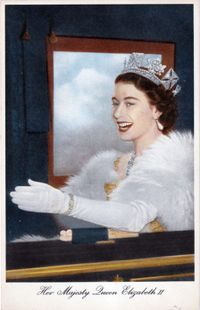

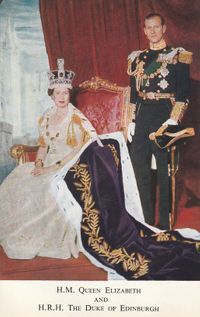
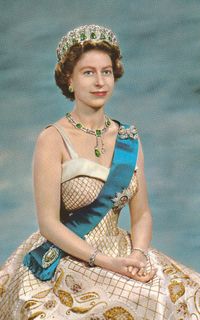
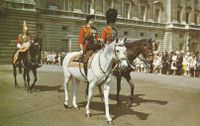
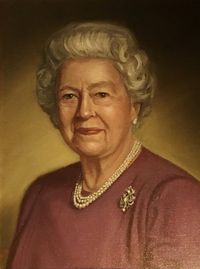
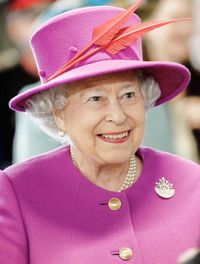
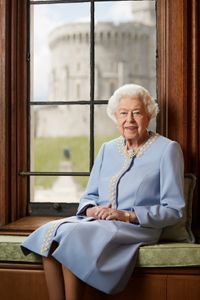

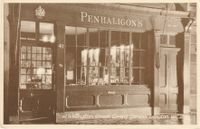
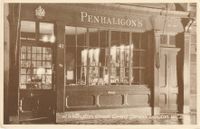




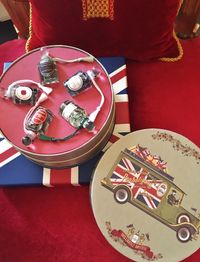


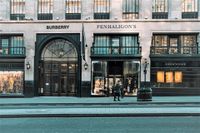
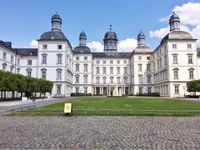

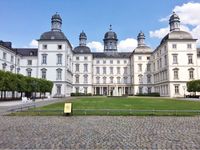

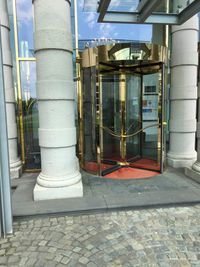
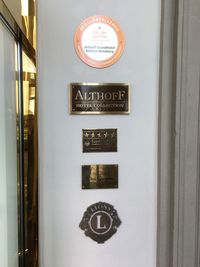

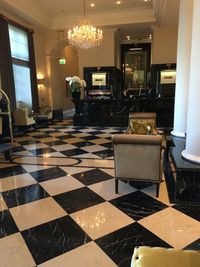

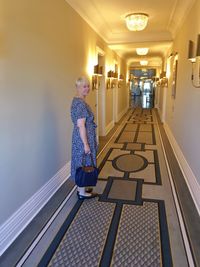
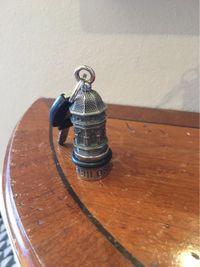


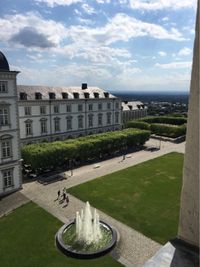


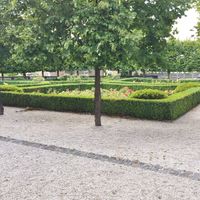
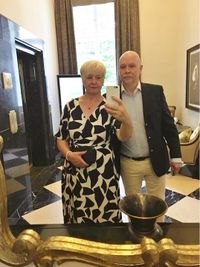


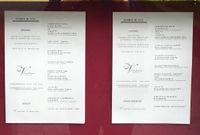
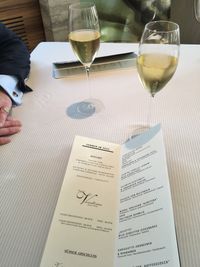
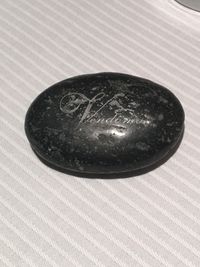





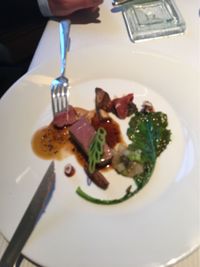
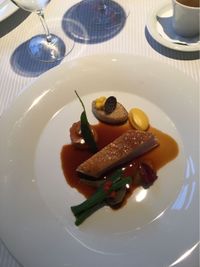
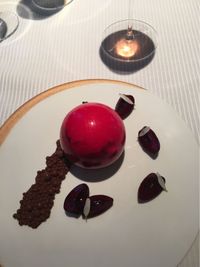
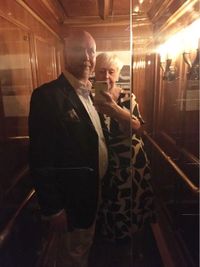


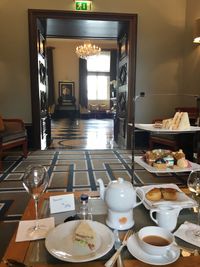
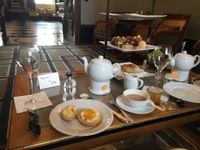
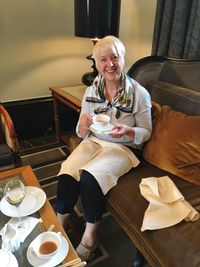


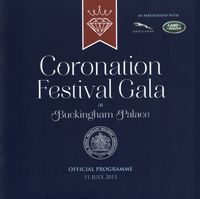



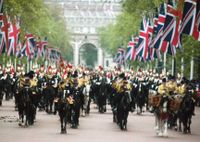

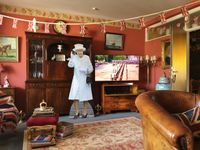
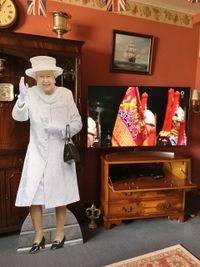

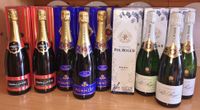
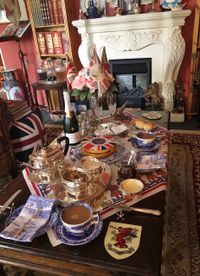
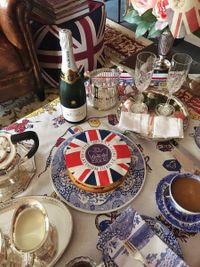
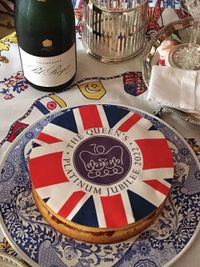

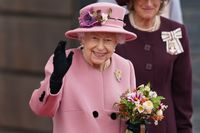

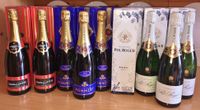


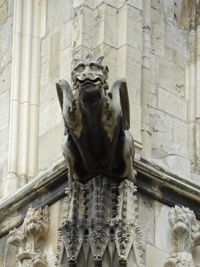
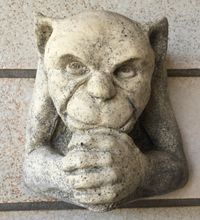
.jpg/picture-200?_=1803c1b6d00)

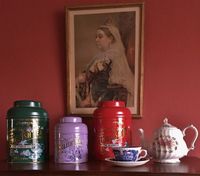
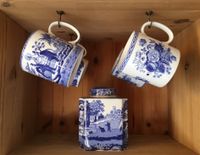
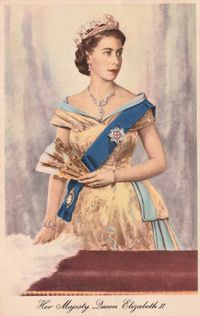
.png/picture-200?_=17eab3397d9)
%20Thomas%20Gainsborough%20PublicDomain.jpg/picture-200?_=17eab15b5d8)
%2C%20by%20Richard%20Brathwait%2C%20shows%20the%20exemplary%20qualities%20of%20a%20gentleman.%20Public%20Domain.jpg/picture-200?_=17eab0f0b3f)
